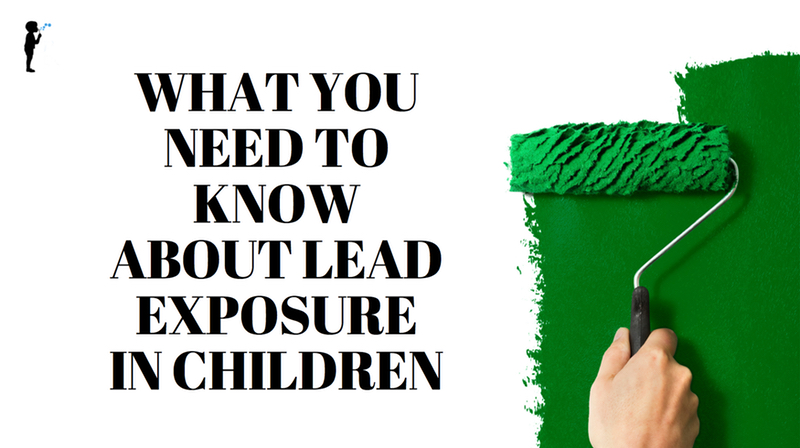
What You Need to Know About Lead Exposure in Children

Lead is a naturally occurring toxic metal that can be found in a variety of sources. Lead exposure is often associated with lead paint or high levels of lead found in drinking water in cities like Flint, Michigan. Both children and adults are exposed to lead, but children are particularly sensitive because their brains and nervous system are still developing.
Lead sources beyond paint:
Rates of lead poisoning in children have decreased as lead has been removed from paint and gasoline in the United States. However, lead can be found in the following sources:
- Pre-1978 homes (have you been remodeling?)
- Lead dust level
- Soil around pre-1978 era homes
- Imported pottery, leaded crystal
- Welding, smelting, ceramics
- Bullets, fishing weights, firing ranges
- Drinking water that flows through leaded pipes
- Furniture, toys, jewelry (especially imported)
Symptoms of elevated lead in children:
Most children who have elevated lead levels have no symptoms or minor symptoms, unless they are exposed at toxic levels. Even at low levels lead can lead to neurological problems or lower IQ. Lead interferes with the body’s ability to use vital nutrients like Vitamin D and iron.
Some common symptoms of lead poisoning:
- ADHD
- Learning disabilities
- Headaches
- Stomachaches
- Poor muscle coordination
- Speech and language problems
- Irritability or behavior problems
- Weight loss or loss of appetite
- Constipation
- Vomiting or nausea
- Pale skin (from anemia)
- Metallic taste in the mouth
- Hearing loss
- Seizures (if severe)
The health effects of lead really depend on the lead levels of the child, so these symptoms care vary greatly.
Testing for lead:
Your child’s pediatrician should perform a lead risk assessment starting at 6 months of age. They will ask you a number of questions, or have you fill out a questionnaire, to assess your child’s risk of lead exposure. If your child is at risk, a blood sample will be taken to see if levels are actually elevated.
There is no known safe lead exposure in children; however, anything greater than 5 micrograms/deciliter is considered a positive test. Depending on level, your child’s doctor will likely come up with a schedule for repeat testing and a plan to reduce and stop the exposure. A child with a level greater than 15 micrograms/deciliter will likely need additional blood testing and imaging to make sure that other organ systems have not been affected. A level greater than 44 micrograms per deciliter will likely require hospitalization and certain medications to decrease the lead level.
Reducing exposure to lead:
The first step in treating elevated lead levels is to find the source of exposure and prevent levels from becoming higher. I typically connect families with a public health expert to work with the family in detail (some will do a home visit!), but here are a few tips to get you started on preventing lead exposure in the first place:
- Keep your child away from peeling paint and home repairs that disturb lead paint
- Report peeling paint to your landlord if you are in a rental property
- Use safe and controlled methods when completing home repair projects
- Frequently wash hands and toys that your child puts in their mouth
- Clean floors and dusty places often with mops or wet cloths
- Use caution when using candles, spices, and toys made in other countries
- Only use cold water for making formula, drinking, and cooking
- Keep your child away from work clothes and tools of caregivers who do construction or other hobbies that may expose them to lead
- Wash work clothes separated from other laundry and remove work clothes before entering your home
Adjunctive treatment for elevated lead:
Children who have increased lead levels will likely have low blood levels of iron, which is called anemia. Low levels of iron should be treated with a children’s iron supplement. I recommend that children take a multivitamin to prevent other nutrient deficiencies, such as zinc, calcium, and other micronutrients. I also recommend that children take additional Vitamin D.
Anemia can also be prevented by maintaining a healthy diet that is high in Vitamin C, which aids in iron absorption. Iron rich foods include:
- Lentils and other beans
- Apricots
- Spinach and other dark, leafy greens
- Red meat
- Sesame seeds
It is important to decrease your child’s exposure to lead in order to prevent developmental issues. Remember that there are no safe levels of lead and the number one treatment is to prevent lead exposure!

References:
For more information about lead exposure in children:
Information regarding lead in Washington State:

